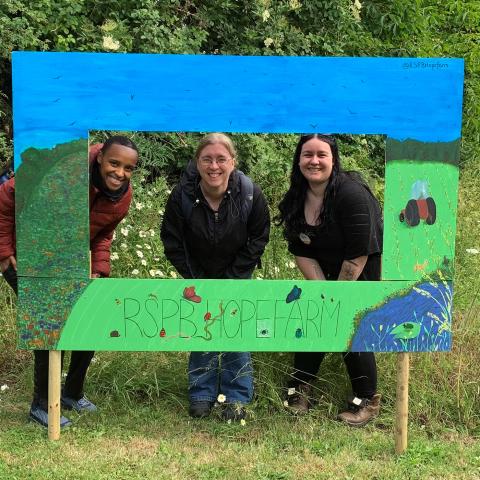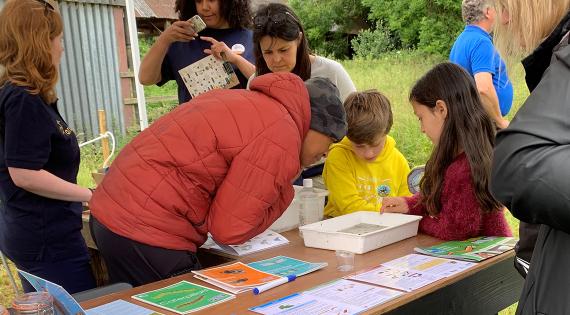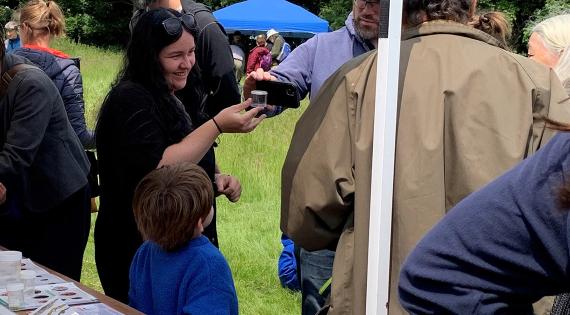A team from the UK Centre for Ecology & Hydrology (UKCEH) had a great time meeting visitors at RSPB Hope Farm on Open Farm Sunday. Dr Melanie Gibbs tells us more…
UKCEH has been carrying out research at RSPB Hope Farm for several years, so it was a real pleasure to take part in its 2025 Open Farm Sunday event and share more with the public about our work here.
Our research at Hope Farm focuses on whether the conservation benefits of creating breeding habitats for beneficial species—such as pollinators and natural pest predators—can outweigh potential risks from pesticide exposure in crop field margins.
Together with early career researchers Ivy Ng’iru and Leah Griffiths, I spent the day talking with visitors about this research and introducing them to some of the wildlife we find on the farm.

The day was highly interactive and a lot of fun! In addition to displaying posters and answering questions, we used a paper-based version of our DNA barcoding method to explain how we identify the species of moths, butterflies and spiders present in their juvenile stages in field margins at the time pesticides are typically applied to crops.
Using the DNA barcoding activity, more than 60 visitors successfully identified some of the moth caterpillars found during our field margin surveys. It was a great way to bring our science to life and show how molecular techniques can help us understand complex ecosystems.




